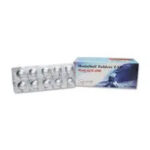Narcolepsy is a neurological disorder characterized by excessive daytime sleepiness and sudden attacks of sleep. This blog explores the various facets of narcolepsy, from its symptoms and causes to diagnosis, treatment options, and strategies for living with this condition.
Introduction to Narcolepsy
Narcolepsy is a chronic sleep disorder that affects the brain’s ability to regulate sleep-wake cycles normally. It often manifests in excessive daytime sleepiness (EDS), where individuals may feel overwhelmingly tired and struggle to stay awake during the day. Additionally, narcolepsy can lead to sudden episodes of muscle weakness or paralysis (cataplexy), vivid hallucinations, and fragmented nighttime sleep.
Symptoms of Narcolepsy
The hallmark symptoms of narcolepsy include:
- Excessive Daytime Sleepiness (EDS): Persistent feeling of sleepiness and the tendency to doze off during the day, regardless of circumstances.
- Cataplexy: Sudden loss of muscle tone triggered by strong emotions such as laughter, anger, or surprise.
- Hallucinations are vivid, dream-like experiences that occur during the transition between wakefulness and sleep.
- Sleep paralysis: temporary inability to move or speak when falling asleep or waking up.
- Disrupted Nighttime Sleep: Fragmented sleep patterns, often characterized by frequent awakenings.
Causes and Risk Factors
The exact cause of narcolepsy is not fully understood, but it is believed to involve a combination of genetic and environmental factors. Key considerations include:
- Genetics: Narcolepsy has been linked to specific genetic markers, particularly those involving the immune system and neurotransmitter regulation.
- Autoimmune Response: In some cases, narcolepsy may develop following an autoimmune response that targets the neurons responsible for producing hypocretin, a neurotransmitter that plays a crucial role in regulating wakefulness and REM sleep.
- Environmental Triggers: Certain infections, hormonal changes, and traumatic brain injuries may trigger or exacerbate narcolepsy symptoms.
Diagnosis and Medical Tests
Diagnosing narcolepsy typically involves:
- Medical History and Symptoms Assessment: Detailed discussion of symptoms and their impact on daily life.
- Sleep Studies (Polysomnography): Overnight tests that monitor brain activity, eye movements, muscle tone, and heart rhythm during sleep.
- Multiple Sleep Latency Test (MSLT): Daytime nap test to evaluate the speed of falling asleep and to detect rapid eye movement (REM) sleep patterns.
Treatment Options and Management Strategies
Managing narcolepsy focuses on improving symptoms and enhancing quality of life:
- Medications: stimulants to promote wakefulness (e.g., Modvigil 200 and Modalert 200), antidepressants for cataplexy (e.g., selective serotonin reuptake inhibitors), and sodium oxybate for EDS and cataplexy.


- Lifestyle Adjustments: Scheduled naps, maintaining regular sleep schedules, avoiding alcohol and large meals before bedtime, and creating a conducive sleep environment.
- Cognitive Behavioral Therapy (CBT): Techniques to improve sleep hygiene, cope with symptoms, and manage stress.
Living with Narcolepsy: Coping Mechanisms and Support
Living with narcolepsy can be challenging, but there are strategies to help individuals lead fulfilling lives:
- Education and Awareness: Understanding narcolepsy and its impact on daily activities.
- Support Groups: Connecting with others facing similar challenges can provide emotional support and practical advice.
- Career and Lifestyle Adjustments: Open communication with employers or educational institutions about accommodations, prioritizing self-care, and maintaining a balanced lifestyle.
In conclusion, narcolepsy is a complex disorder that requires a multidisciplinary approach to management. By understanding its symptoms, causes, diagnosis, treatment options, and coping strategies, individuals can effectively navigate the challenges associated with narcolepsy and achieve a better quality of life.

